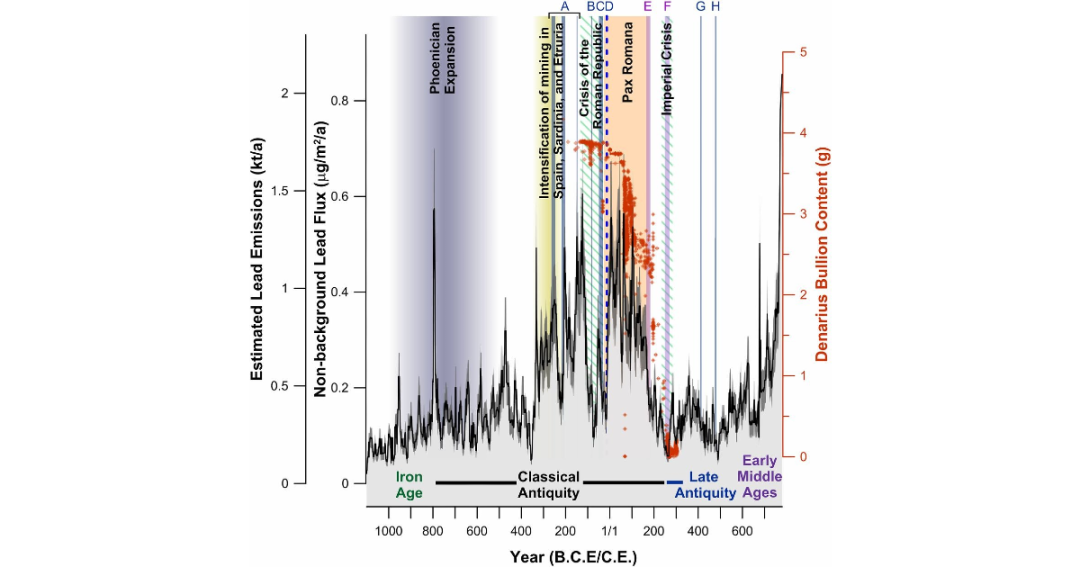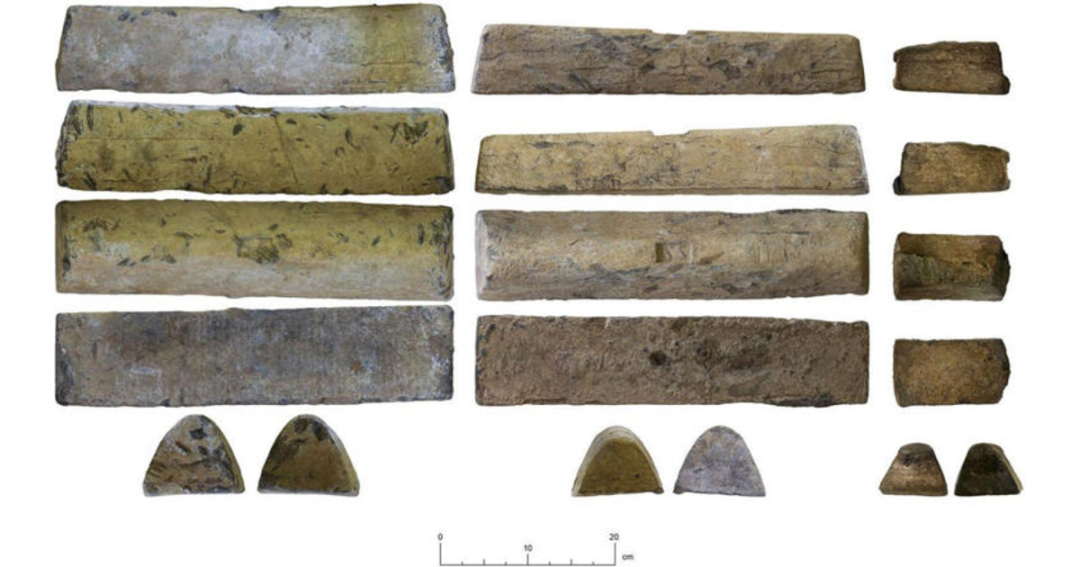The rise of the Greek and Roman empires left a permanent mark on the history of Europe, but their downfall rippled out even further afield – all the way to the Arctic.
Pollution from the lead mines that sprang up during the expansion of these first great European civilization’s drifted thousands of miles to the ice sheets of Greenland.

These lead emissions were preserved as falling snow captured them in layer after layer of ice, leaving traces of these ancient peoples that have survived thousands of years.
Ice cores extracted in Greenland have provided researchers with a unique vision of history told by the pollution left behind by the people of Europe from the late Iron Age through to the Middle Ages. Pollution so bad that air was so poor it lead to mass I.Q. drops.
The found that lead pollution in Greenland very closely tracked known plagues, wars, social unrest and imperial expansions during European antiquity.

Their record of accurately dated lead measurements from ice cores traced the period from 1100 BCE to the early Middle Ages, a time that includes the rise and fall of the ancient Greek and Roman civilizations.
Corroborating Facts:
In a separate study researchers unearthed a cache of Roman-era lead ingots in northern Cordoba, Spain. Archaeologists analyzing the ingots from the first century CE say Cordoba was the main center for lead smelting in the ancient Western world. This region produced lead for numerous everyday items such as spoons, tiles and pipes.

Lead was commonly used in the Roman Empire, with aristocrats using cooking vessels and water pipes made of the metal. Some wealthy Romans even added lead acetate to their wine to sweeten it, unwittingly poisoning themselves with the neurotoxin.
Now historians suggest that widespread lead poisoning of its rulers likely played a role in the mighty empire’s downfall. Two of the ingots found in Cordoba have an identifying mark, revealing the importance of lead mining in the central Sierra Morena region during the Roman period.
The mark is “SS”, referring to Societas Sisaponensis, a mining company in La Bienvenida, a region famous for producing mercury mineral cinnabar.
So next time you hear about the mad tales of Roman emperors’ betrayals and escapades, know now they had truly gone mad from lead and mercury poisoning.

